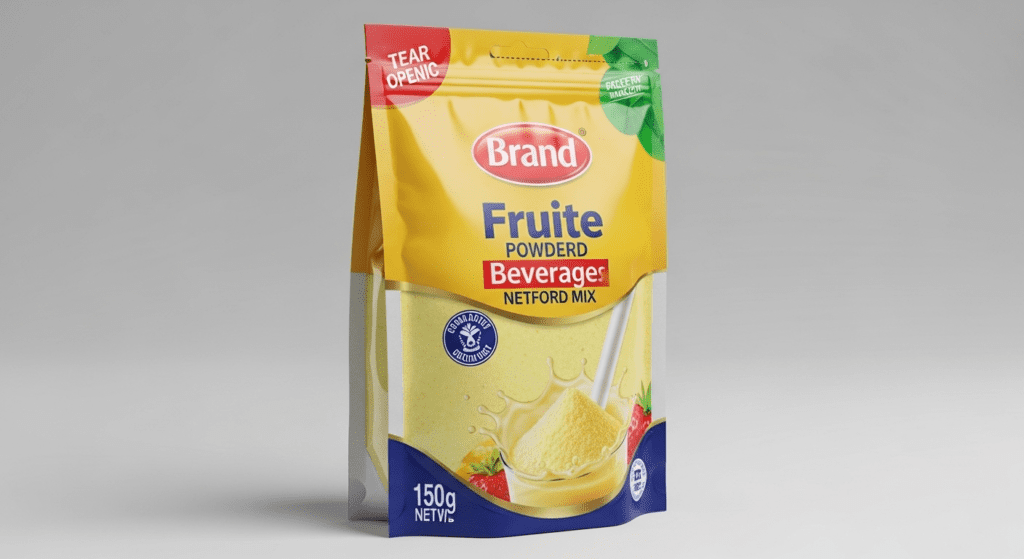The main types of sachet packaging include three-side seal sachets, four-side seal sachets, center-seal sachets, stick packs, gusseted sachets and more.
Each type serves different product needs, from powders and liquids to granules, offering protection, portion control, and extended shelf life in compact formats.
Standard Flat Sachets
Standard flat sachets are the most basic and common type of sachet packaging. They lie completely flat when filled and sealed.
Three-Side Seal Sachets
Three-side seal sachets are sealed on three edges with one side left open during manufacturing. This open side gets sealed after filling the product.
These sachets work perfectly for single-use portions of liquids, powders, or granules. You’ll often find them containing sugar, salt, shampoo samples, or sauce packets at restaurants.
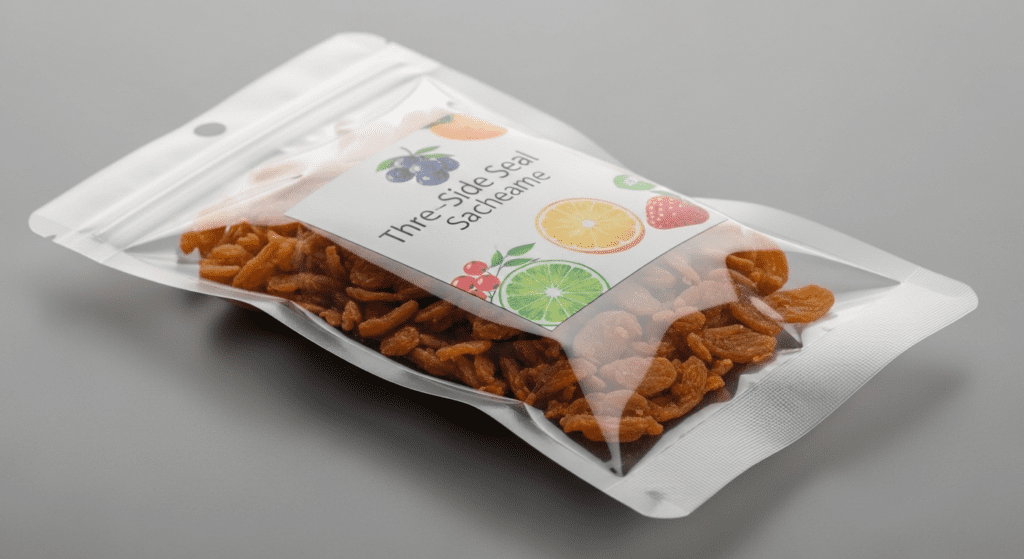
Four-Side Seal Sachets
Four-side seal sachets have all four edges sealed, creating a completely enclosed package. Manufacturers seal these packets on all sides after filling them through a small opening.
This design provides extra protection against leaks and contamination. The strong seals on all sides make them ideal for liquid products like energy gels, medicine, or cosmetic samples.
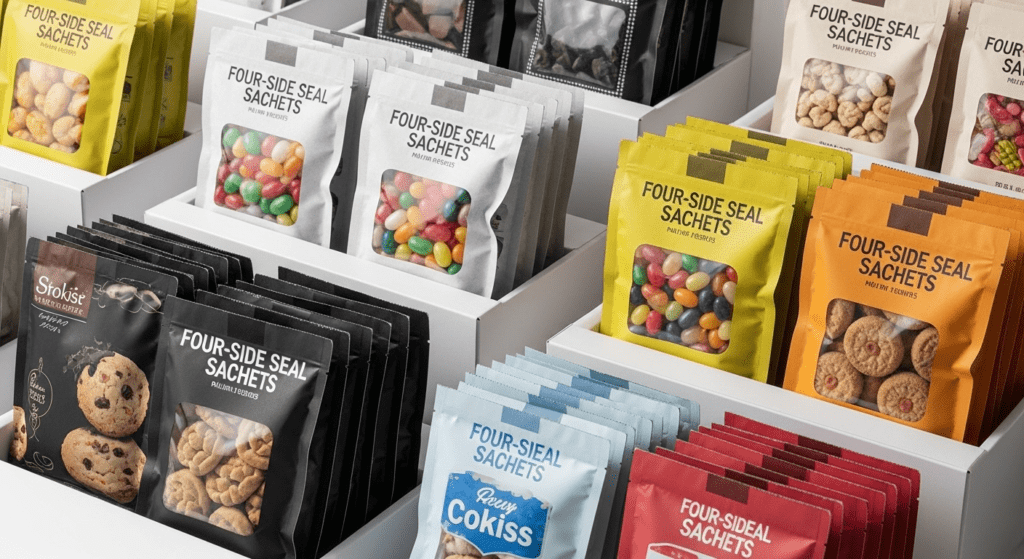
Stick Packs
Stick packs are long, narrow sachets that look like thin tubes. They typically measure 1-2 inches wide and 3-6 inches long.
These convenient packages work great for powder products like instant coffee, protein powder, or drink mixes. The narrow opening makes it easy to pour contents without spilling.
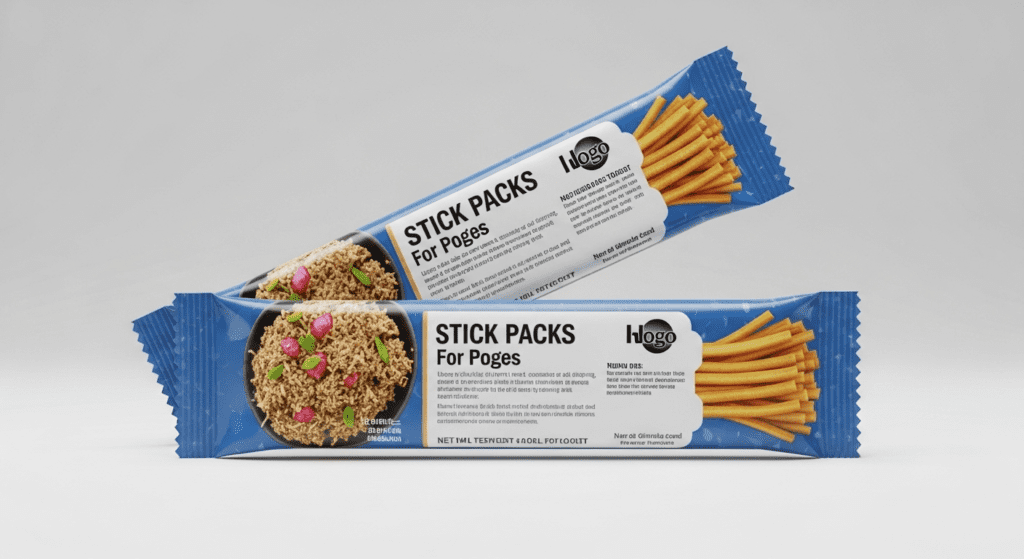
Pillow Packs
Pillow packs get their name from their puffy, pillow-like appearance. They have sealed edges on the top and bottom with a vertical seal running down the back.
This style creates more internal volume than flat sachets. The extra space makes them perfect for products that need room to move, like snack foods or hardware items.
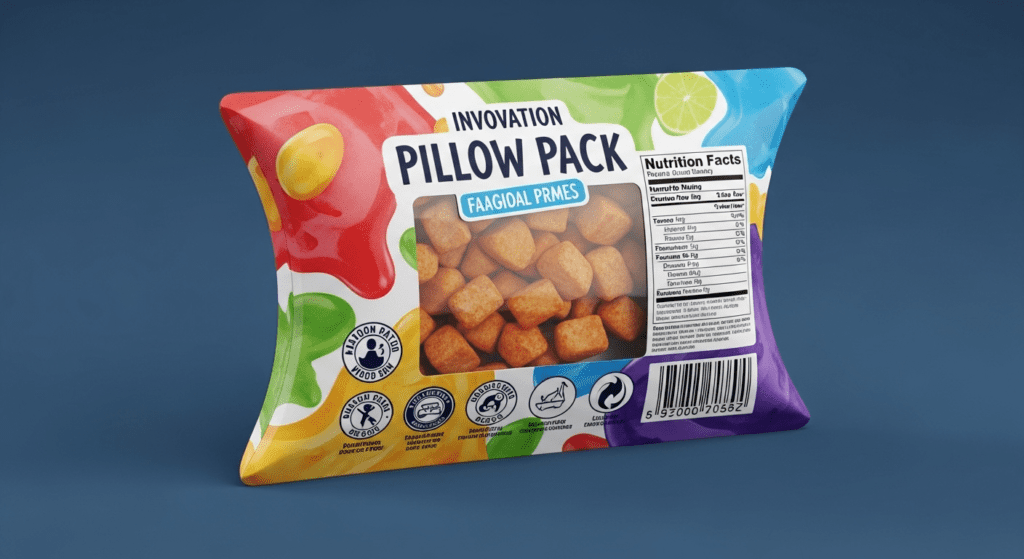
Shaped and Die-Cut Sachets
Shaped and die-cut sachets break away from traditional rectangular designs. Manufacturers can create custom shapes like hearts, circles, or product silhouettes.
These unique packages help brands stand out on store shelves. Common examples include animal-shaped vitamin packets for children or holiday-themed sample packages.
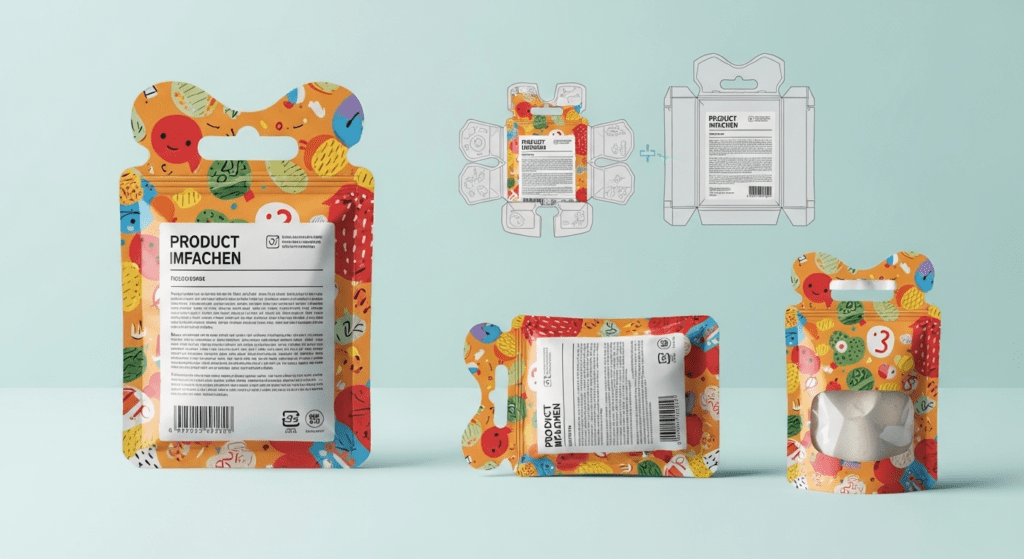
Spouted Sachets
Spouted sachets feature a built-in pouring spout or nozzle. This spout allows controlled dispensing of the contents without scissors or tearing.
These packages work excellently for thick liquids like baby food, energy gels, or condiments. Users can squeeze out exactly the amount they need without making a mess.
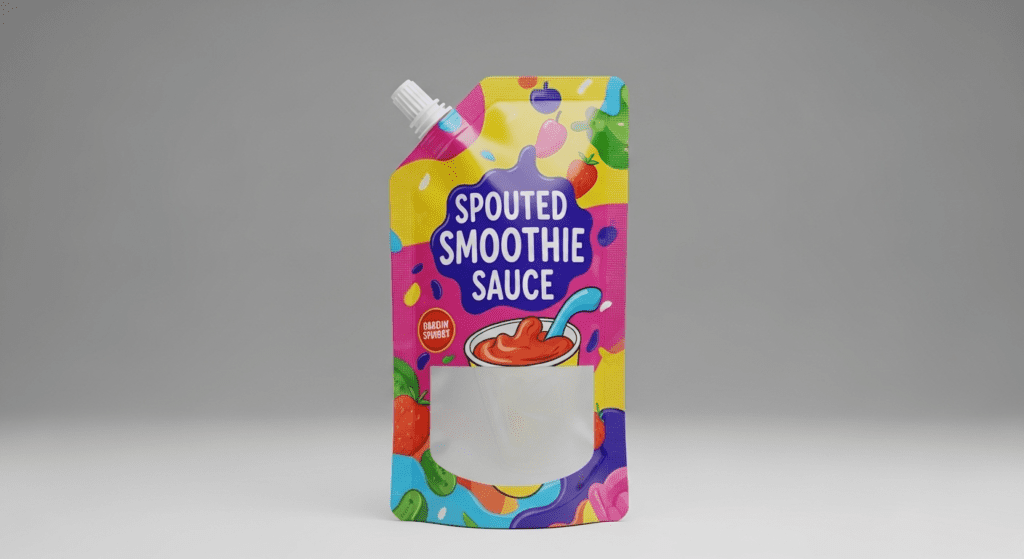
Resealable/Zipper Sachets
Resealable sachets include a zipper or press-to-close mechanism at the top. Consumers can open and close these packages multiple times.
This design works perfectly for products used over several days or weeks. Common applications include snacks, pet treats, or craft supplies.
The zipper closure keeps contents fresh between uses. It also prevents spills during transportation after opening.
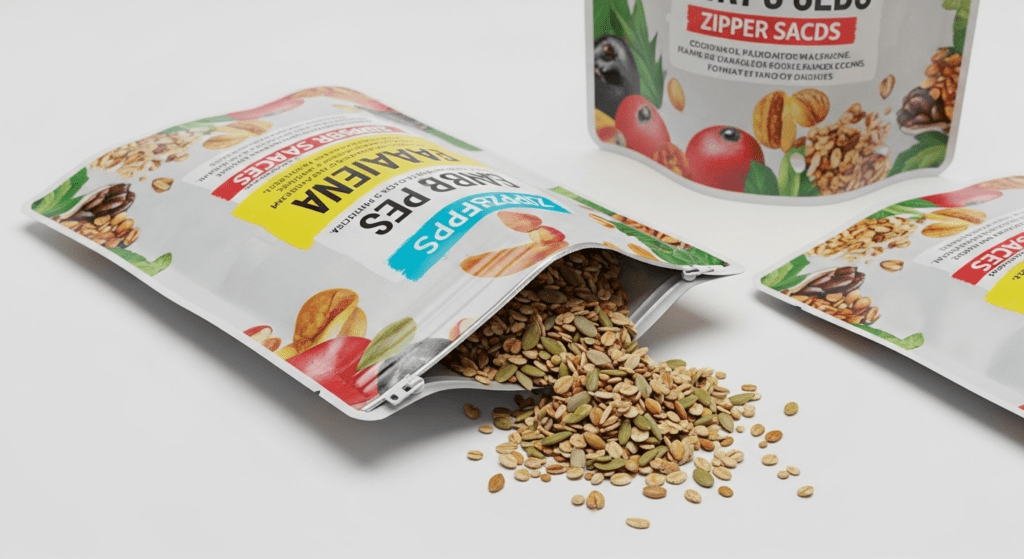
Stand-Up Pouches
Stand-up pouches have a gusseted bottom that expands to create a stable base. This design allows the package to stand upright on shelves or counters.
While larger than traditional sachets, small stand-up pouches still qualify as sachet packaging. They typically hold 50-500ml of product.
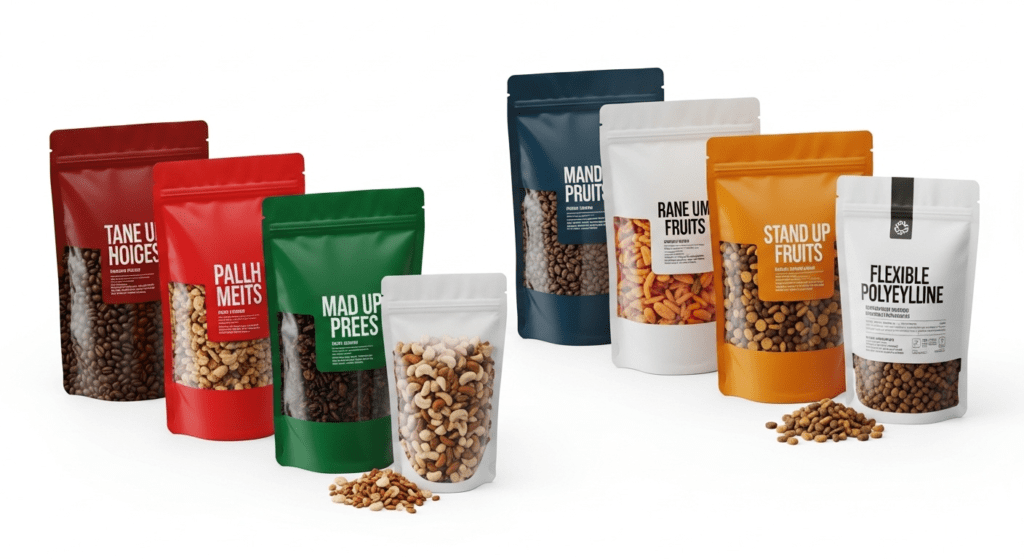
Bag in Bag Sachets
Bag in bag sachets contain one sealed packet inside another. This double-layer design provides extra protection for sensitive contents.
Pharmaceutical companies often use this style for medications that need moisture protection. The inner bag might contain a desiccant packet to absorb humidity.
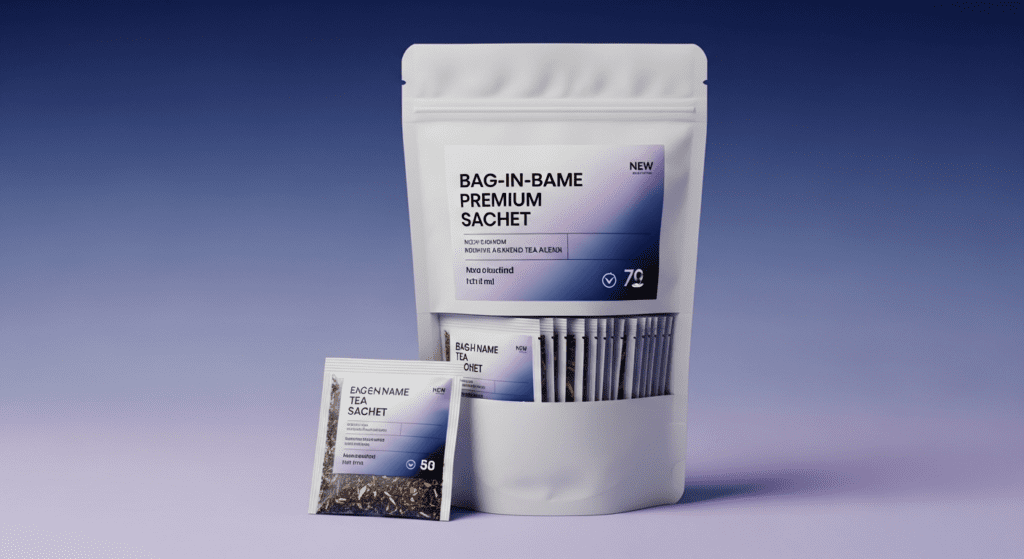
Sachets with Valves
Sachets with valves feature a one-way valve that releases gas while preventing air from entering. This special valve maintains product freshness for items that release gases.
Coffee manufacturers commonly use valve sachets for single-serve portions. The valve lets carbon dioxide escape while keeping oxygen out.
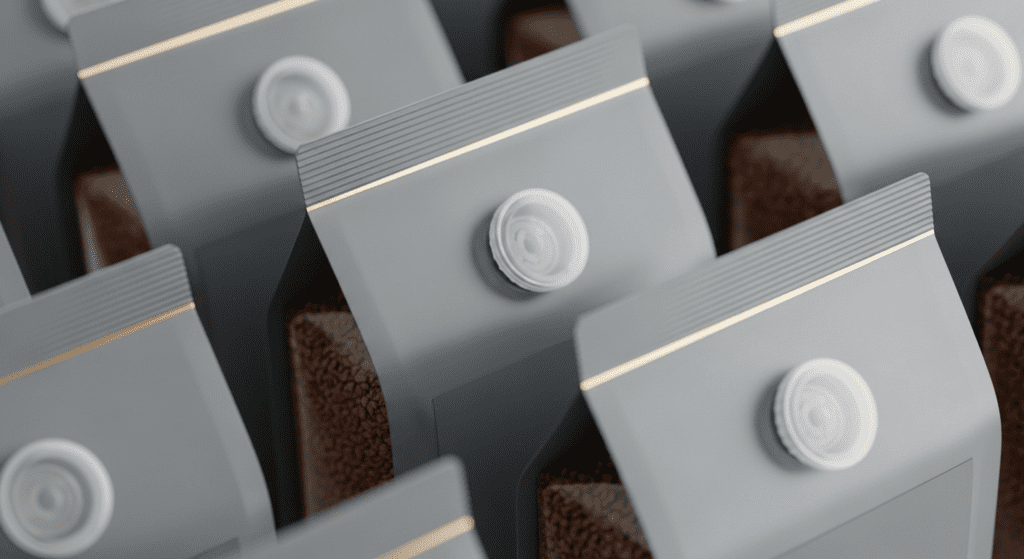
Multiple Sachets
Multiple sachets involve several connected packets in a strip or sheet format. Consumers can tear off individual portions as needed.
This format works well for products sold in bulk but used individually. Examples include pain medication, vitamins, or seasoning packets.
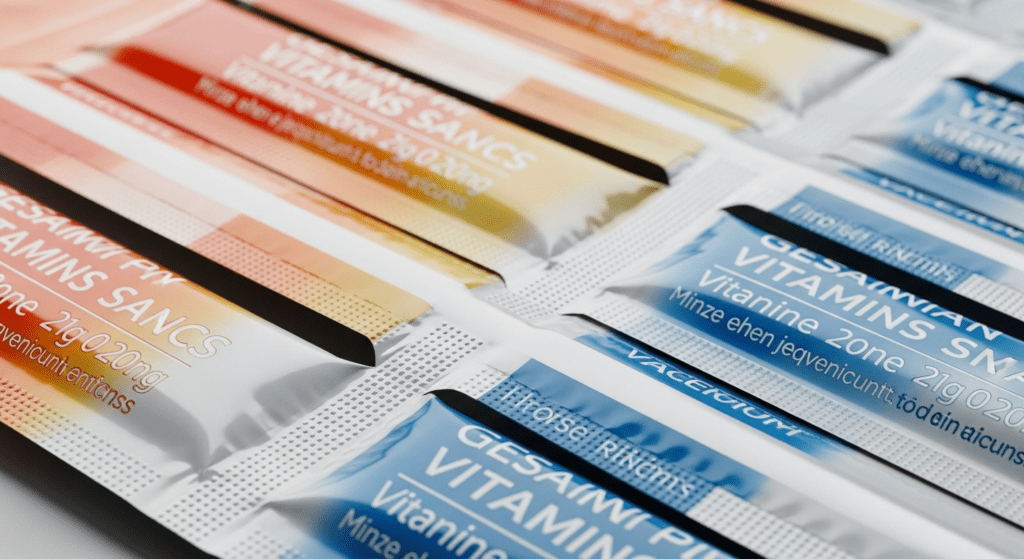
Center-Seal (Back-Seal) Sachets
Center-seal sachets have a vertical seal running down the middle of the back. This design creates a tube-like structure before the top and bottom seals are added.
The back seal provides a clean front surface for branding. Many companies prefer this style for premium product samples.
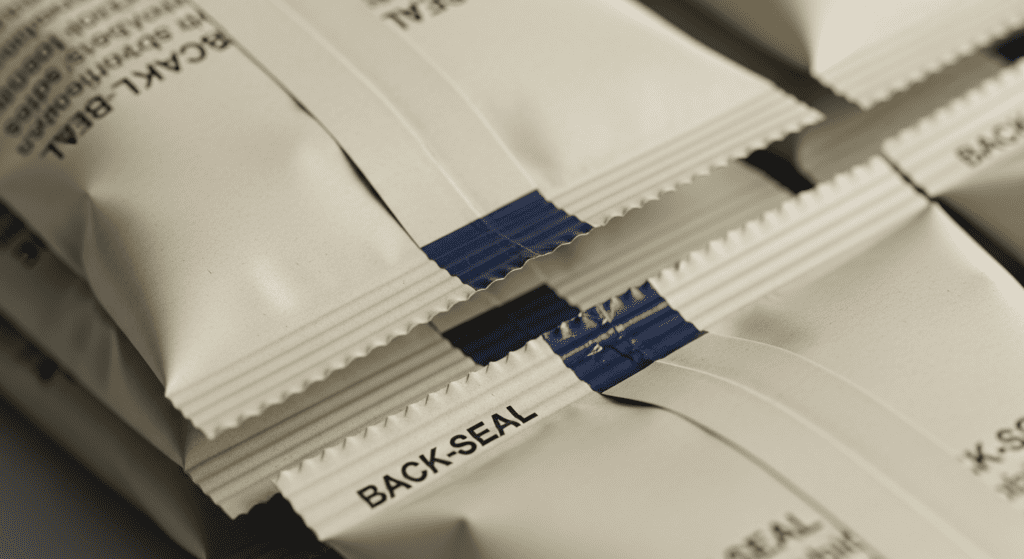
Gusseted Sachets
Gusseted sachets feature expandable sides or bottoms that unfold when filled. These gussets create more internal volume than flat sachets.
The expandable design accommodates bulkier products or larger portions. Common uses include trail mix, potpourri, or bath salts.
Side gussets allow the package to expand horizontally. Bottom gussets create a box-like shape similar to stand-up pouches but without the standing capability.
